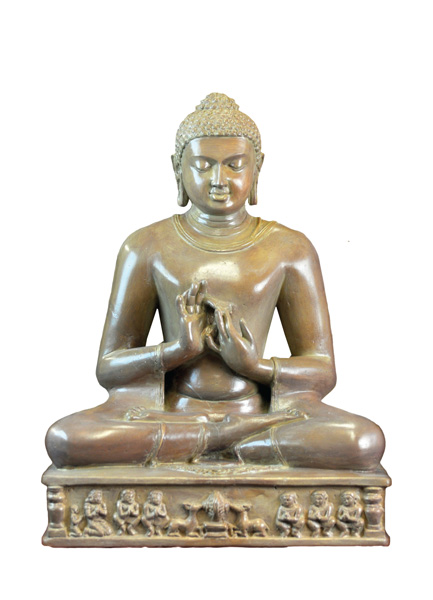A lot of people ask me about reports of anti-Muslim violence in Myanmar, since I live at a Burmese monastery and they assume I might have special inside knowledge. With the appearance of a new cover story in Time magazine on this topic, let me say here what I can figure out about this.
As far as I can see the coverage in the Western press has been worse than deplorable, and at the same time violent incidents are real as is anti-Muslim sentiment in much of the Buddhist population of Myanmar. The involvement of Burmese monks is very small, yet it also does exist.
First, it is important to keep in mind that the phrases Buddhist extremist and Buddhist fundamentalist are meaningless in this context. Any expression of hatred for a group of people is simply unBuddhist. The Buddha never endorsed hatred or violence under any circumstances, ever, even in self-defense. He never condemned other faiths. There is simply nothing in Buddhism, even with the most assiduous cherry-picking, that one could be fundamentalist or extreme about and produce a justification for violence. The violence is entirely in spite of Buddhism, not because of it. Still, we are not all perfect Buddhists.
The social roots of the violence are complex. Many Burmese express surprise that the recent violence has erupted, since “Buddhists and Muslims have lived peacefully together for many years,” to quote an ethnic Mon monk I was talking to about this just today. Still I have heard derogatory comments about Muslims among Burmese since before the present violence. There are differences in the value systems of Islam and Buddhism which may are bound to make some people judgmental. For instance, Buddhists are protective of animal life so most butchers in Myanmar are Muslims. Buddhists purchase meat from the butchers, then look down on them for killing the meat.
Most of the violence has centered in Rakhain State directed against Rohingya Muslims who have immigrated from Bangladesh starting under British rule. It is hard to sort out the dynamics of this conflict, but it seems to involve immigration policy and competition for land resources in an already extremely poor population, particularly as more Rohingyas have entered Burma due to flooding in Bangladesh. It does not help that there are reports of oppression against the Buddhist minority on the Bangladeshi side of the border. Myanmar was marked by ethnic violence primarily as minorities have taken up arms against a brutal regime. Myanmar is also in a period of transition toward a more open society after years of brutal military rule. Many countries that have experienced such a transition seem to experience an abrupt bubbling up of long suppressed tensions. Yugoslavia is an example from the 90’s. In Rakhain State we find violence on both sides, generally following an old pattern of tit-for-tat, exaggerated by rumor, escalating until the majority party does something extreme.
The Western press has tended simply to ignore the social causes and attribute violence directly to Buddhist hatred of Muslims. I see this in story after story. When monks are brought into the stories it is almost always as instigators of violence. When the government is brought into the stories it is almost always as an indifferent or biased party. Rarely covered are the efforts of monks and the government to mitigate the violence or to protect the Muslim population from violence. This is more than inaccurate reporting; it contributes directly to the ignorance and rumors that lead to further violence, implicating the press itself in the violence in the next-to-worst way.
Of course any contribution of monks to hatred or violence is particularly disturbing, to Buddhists around the world, and to me personally as a monk ordained in the Burmese tradition. I know many Burmese monks, a few of which have sometimes to my alarm expressed anti-Muslim sentiments. However I have never heard one endorse violence in any way; consistently they deplore the violence, and many deplore anti-Muslim sentiment as well.
The Western press focuses repeatedly on this same monk, Ashin Wirathu, who appears on the new cover of Time magazine as the “face of Buddhist terror.” However I have never found in the Western stories anywhere where Ashin Wirathu has directly advocated violence against Muslims (let me know if you know of such a quote), rather his agenda seems to be a peaceful economic boycott against Muslim businesses. His rhetoric is clearly hateful, and he is reported for reasons I cannot make any logical sense of to call himself a Buddhist Osama bin Laden. But I don’t think this qualifies as terrorism. Incidentally, if a monk advocates an act of killing and thereby causes someone else to carry out that act, that monk has thereby just disrobed, according to the ancient monastic code. Ashin Wirathu certainly knows this.
I would like to highlight my own preceptor, Sitagu Sayadaw, as a more moderate, typical and influential monastic voice in Myanmar than Ashin Wirathu. I have never seen Sitagu Sayadaw mentioned in the Western press with regard to this issue in spite of his eminence. The following are links to a press release that he issued concerning the violence, in somewhat imperfect English, and a story from the South China Morning Post in which he is quoted at the end of a story that gives voice to other sensible monks as well.
Communal Violence Condemned by Sitagu Sayadaw
Myanmar Monks Say Most Oppose Anti-Muslim Campaign
As Buddhists our primary task is the perfection of human character. We become mindful of every intention and seek to address any tendency toward greed, hatred or delusion. Except for the rare arahant, we fall short of the aspiration, but we keep trying in a very complex and ensnarling world. Part of this task is the perfection of kindness, at which point it shines on all without bias, even on those who might wish us harm.

Leave a Reply